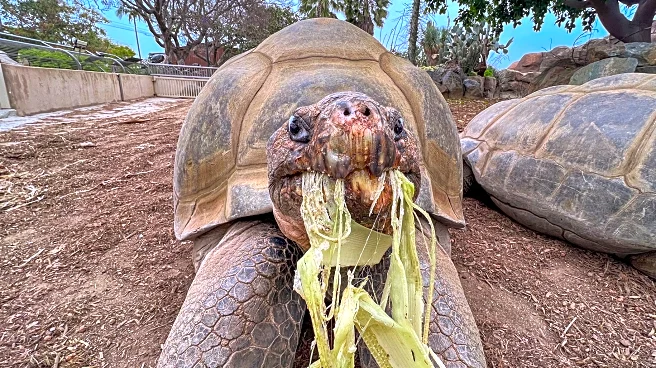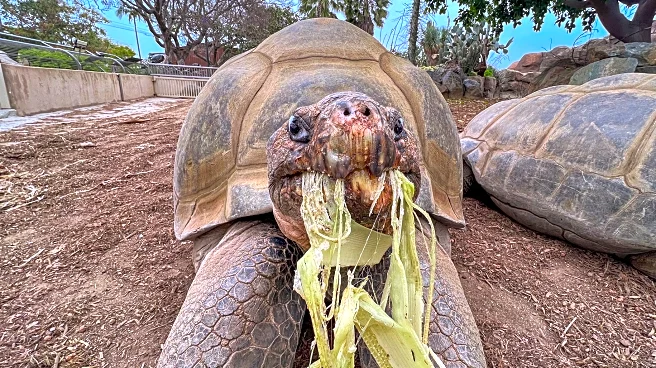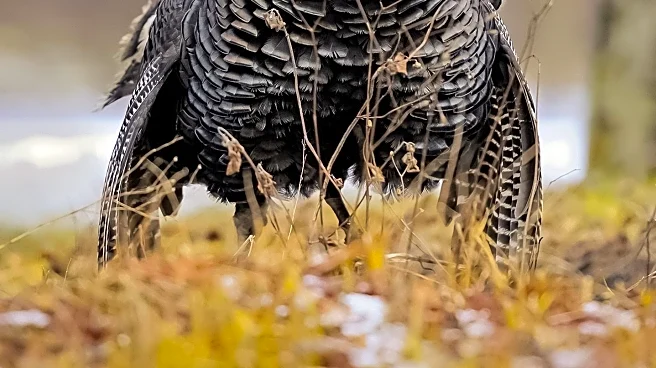What's Happening?
Gramma, a beloved Galapagos tortoise and the oldest resident of the San Diego Zoo, has passed away at the age of approximately 141. Gramma was known for her sweet and shy personality, delighting visitors
for decades. She was originally brought to the San Diego Zoo from the Bronx Zoo between 1928 and 1931 as part of the first group of Galapagos tortoises. Over her lifetime, Gramma lived through significant historical events, including two World Wars and the terms of 20 U.S. presidents. Her caretakers affectionately referred to her as 'the Queen of the Zoo.' Gramma's health had been declining due to age-related bone conditions, leading to her euthanasia. Her passing has prompted many visitors to share fond memories of their encounters with her, highlighting her impact on generations of zoo-goers.
Why It's Important?
Gramma's death marks the end of an era for the San Diego Zoo, as she was a living link to the zoo's early history and a symbol of longevity and resilience. Her presence at the zoo has inspired interest in tortoise conservation, with many visitors expressing a desire to learn more about these ancient creatures. Galapagos tortoises are known for their long lifespans, often exceeding 100 years in the wild and even longer in captivity. The conservation of Galapagos tortoises is crucial, as several subspecies are vulnerable or critically endangered. Efforts to breed these tortoises in captivity have been successful, with thousands of juveniles released into the wild since 1965. Gramma's life and legacy underscore the importance of conservation efforts and the role zoos play in educating the public about endangered species.
What's Next?
The San Diego Zoo will continue its efforts in tortoise conservation, focusing on breeding programs and public education to raise awareness about the plight of Galapagos tortoises. The zoo may also consider commemorating Gramma's life through exhibits or educational programs that highlight her contributions to conservation and the zoo's history. As zoos across the country work to preserve endangered species, the lessons learned from Gramma's life can inform future conservation strategies. Additionally, the zoo community may explore new ways to engage visitors in conservation efforts, ensuring that Gramma's legacy continues to inspire future generations.
Beyond the Headlines
Gramma's story highlights the ethical considerations involved in the care and management of long-lived animals in captivity. Her life raises questions about the responsibilities of zoos in providing appropriate care for aging animals and the balance between conservation and animal welfare. The cultural significance of Gramma's longevity also reflects broader societal values regarding the preservation of natural history and biodiversity. As zoos evolve, they must navigate these complex issues, ensuring that their practices align with ethical standards and contribute positively to conservation goals.














